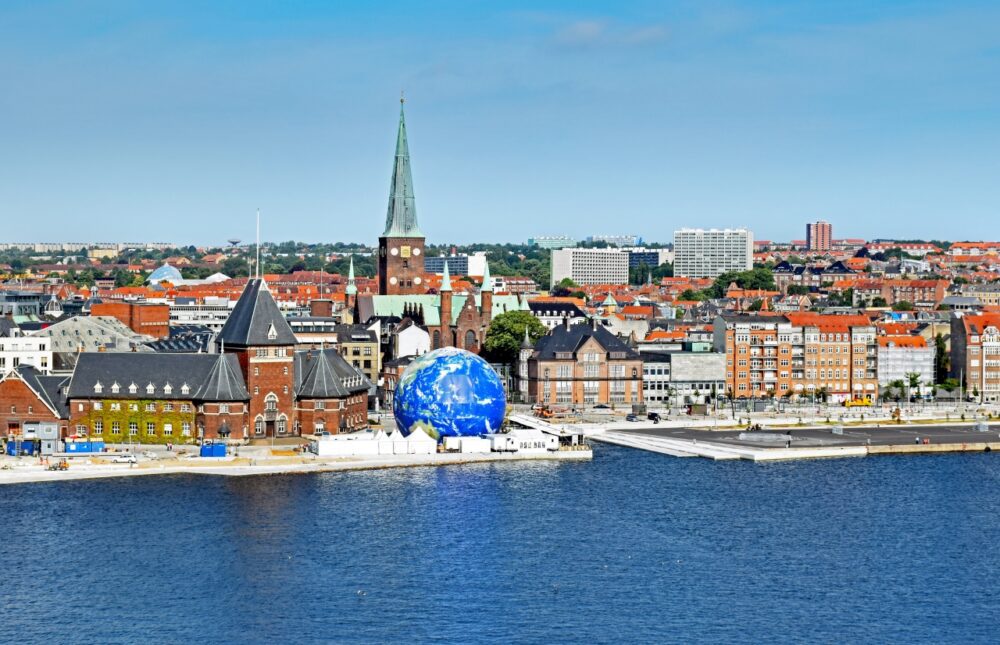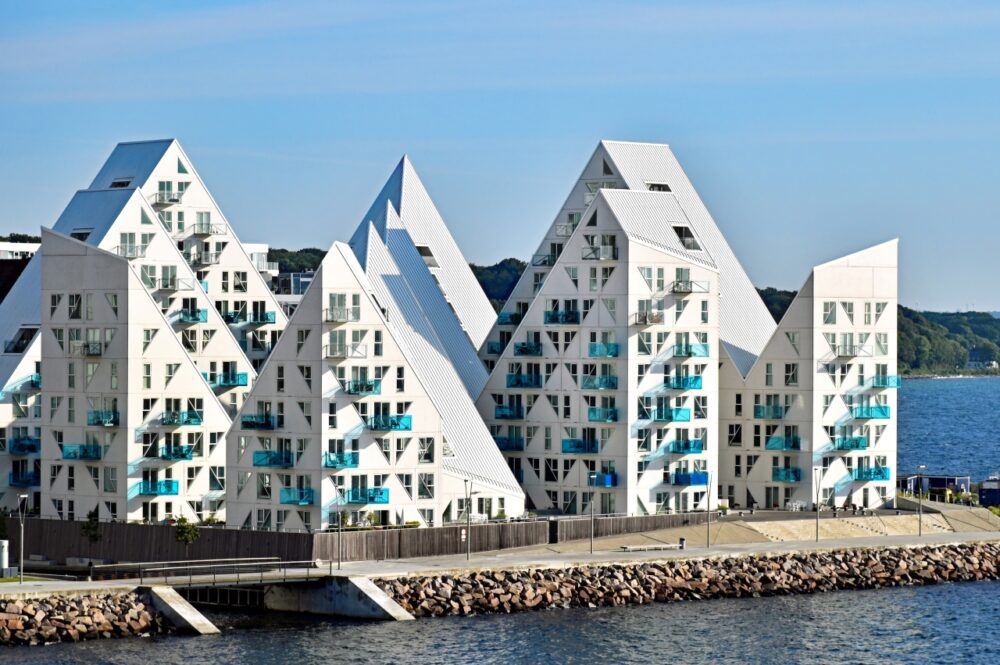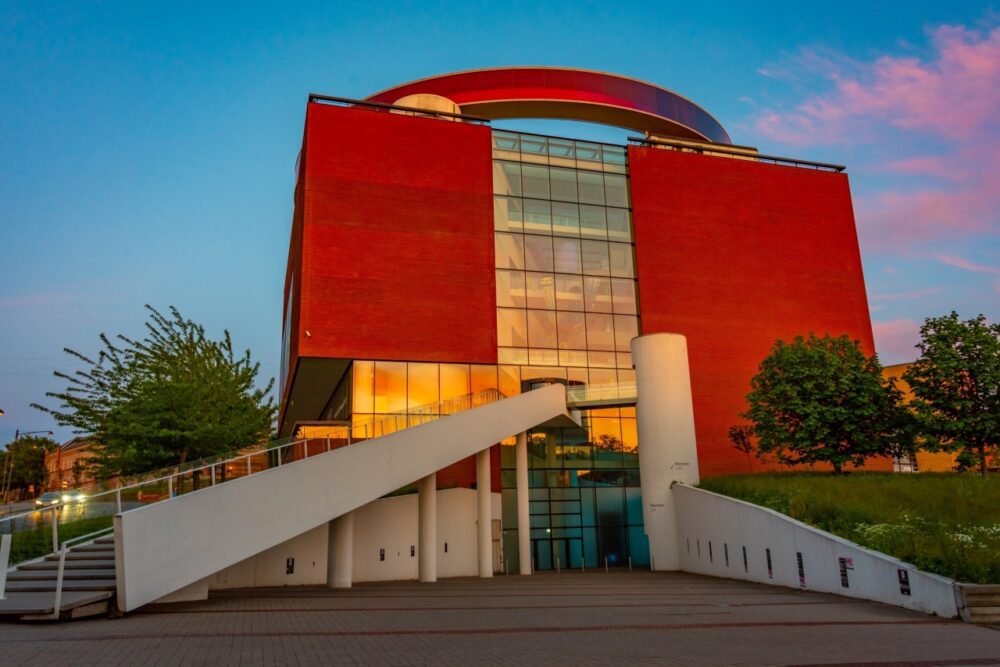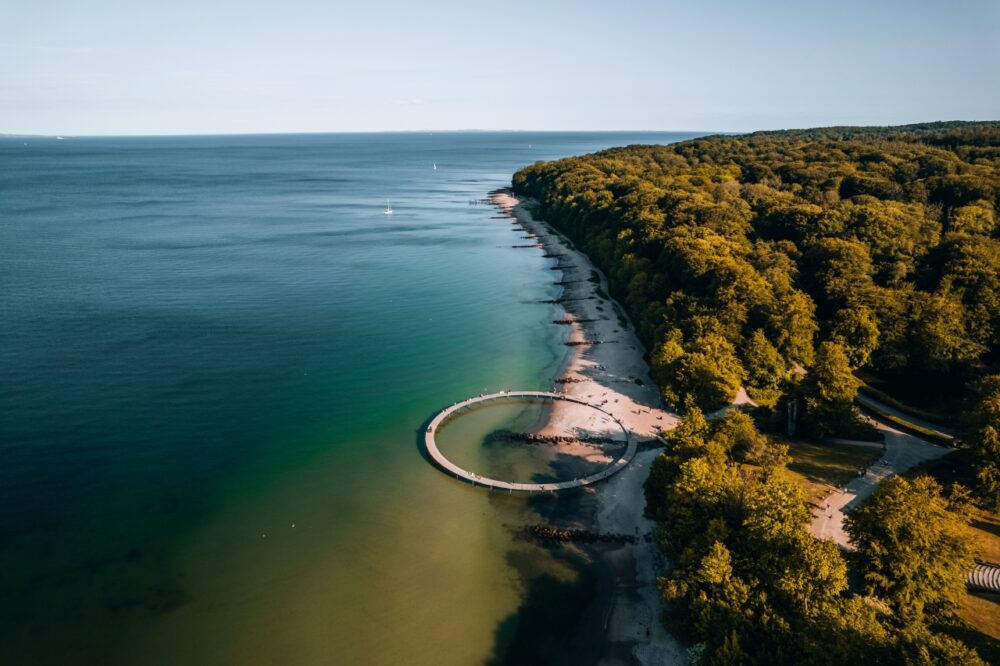
Is Aarhus worth visiting? Absolutely! When I first explored Aarhus, Denmark’s second-largest city, I was struck by its unique combination of charm, creativity, and calm. From the cobbled streets of the Latin Quarter to the modern waterfront district, Aarhus offers a delightful mix of the old and new. It’s a place where you can admire centuries-old churches in the morning and lose yourself in cutting-edge art at ARoS Museum in the afternoon.
Nestled on the east coast of Jutland, Aarhus is often called the “City of Smiles,” and it’s easy to see why. The city boasts a thriving cultural scene, stunning architecture, and a welcoming vibe that feels worlds apart from the hustle and bustle of bigger cities. Whether you’re exploring Den Gamle By (The Old Town), biking along the scenic coastline, or sampling Danish pastries at a local bakery, Aarhus has something for everyone. But is Aarhus worth visiting for you?
In this blog post, we’ll uncover the top 10 reasons why Aarhus should be on your travel list, from its vibrant arts and culinary scenes to its beautiful natural surroundings. Plus, we’ll share travel tips to help you make the most of your visit. Keep reading to see why Aarhus is a Danish gem waiting to be discovered.
Table of Contents
Pros – Reasons You Should Visit Aarhus
1. A Perfect Blend of History and Modernity

Aarhus is Denmark’s second-largest city, but it has a completely different feel from Copenhagen. It blends historic charm with a modern, youthful energy, thanks to its well-preserved Old Town, cutting-edge architecture, and thriving student population. Walking through the city, you’ll find centuries-old buildings standing alongside sleek, contemporary structures, creating an interesting contrast that reflects Aarhus’s evolving identity.
I started my visit in the Old Town, where cobblestone streets and timber-framed houses transported me back in time. Just a short walk away, I found the ultra-modern Dokk1 library and the futuristic ARoS Art Museum, showing just how diverse the cityscape is. Unlike some cities where history and modernity feel separate, Aarhus blends them seamlessly, making it a fascinating place to explore.
2. The Charming Old Town (Den Gamle By)

One of Aarhus’s most unique attractions is Den Gamle By, an open-air museum that recreates different periods of Danish history. It’s more than just a museum—it’s an immersive experience where you can walk through historical streets, peek inside traditional homes and shops, and even interact with costumed actors who bring the past to life.
I spent hours wandering through the different sections, from the 18th-century market town to the 1970s-themed street, complete with a retro radio shop and a classic Danish bakery. The level of detail was incredible, and it felt like stepping into a time machine. Even if you’re not usually into history museums, Den Gamle By is one of those places that makes learning feel fun and engaging.
3. ARoS Art Museum and Its Iconic Rainbow Panorama

ARoS Art Museum is one of the most striking contemporary art museums in Europe, known for its impressive exhibitions and its famous Rainbow Panorama—a circular glass walkway that sits atop the building, offering panoramic views of the city through a spectrum of colors.
I took the elevator up to the Rainbow Panorama, and the experience was surreal. Walking through the colored glass made the city below shift from deep reds to bright blues and greens, creating a completely new way to see Aarhus. Inside the museum, the collection ranged from classic European paintings to bold, experimental installations. Whether you love modern art or just want an incredible view, ARoS is a must-visit.
4. A Relaxed and Walkable City with a Cozy Atmosphere
Aarhus is compact and easy to explore on foot, with most major attractions, shopping streets, and cultural sites within walking distance of each other. Unlike larger cities where getting around can be exhausting, Aarhus feels manageable and inviting, with wide pedestrian-friendly streets, charming squares, and plenty of green spaces to take a break.
I loved strolling through the Latin Quarter, the city’s oldest neighborhood, where small boutiques, artisan coffee shops, and independent bookstores lined the cobbled streets. It had a laid-back, almost village-like atmosphere, making it the perfect place to wander without a strict itinerary. If you enjoy cities that are easy to navigate and not overwhelming, Aarhus is one of the most pleasant places to explore on foot.
5. A Thriving Food Scene with a Focus on Local and Sustainable Cuisine
Aarhus has developed a fantastic food scene in recent years, with a strong emphasis on local, seasonal ingredients and sustainable dining. From Michelin-starred restaurants to casual street food markets, the city offers a great mix of fine dining and everyday comfort food.
I visited Aarhus Street Food, a lively indoor market housed in an old bus garage, where I sampled everything from Danish smørrebrød to Vietnamese bao buns. Later, I treated myself to dinner at one of the city’s New Nordic restaurants, where every dish was beautifully plated and made with fresh, local produce. Whether you’re a foodie or just enjoy good-quality meals, Aarhus has plenty to offer.
6. The Stunning Marselisborg Forests and Beaches

One of the great things about Aarhus is its easy access to nature. The city is surrounded by beautiful forests, beaches, and coastal trails, making it a great destination for outdoor lovers. The Marselisborg area, located just a short bike ride from the city center, offers peaceful woodland walks, scenic ocean views, and even a deer park where you can get up close to friendly deer.
I spent an afternoon walking through the forest trails and ended up at a quiet beach, where the Baltic Sea stretched out in front of me. It was hard to believe I was just minutes away from a major city. If you love combining urban exploration with nature, Aarhus provides the perfect balance between the two.
7. A Young and Creative Vibe Thanks to Its Large Student Population
Aarhus is home to one of Denmark’s largest universities, which gives the city a youthful and energetic atmosphere. The student presence brings a strong creative influence, leading to a thriving music scene, independent art galleries, and a packed calendar of festivals and events.
I visited during Aarhus Festuge, the city’s annual culture festival, and the streets were filled with performances, pop-up art installations, and live music. The energy was infectious, and it was clear that the city embraces its role as a creative hub. Even outside of festival season, Aarhus’s cafés, bars, and cultural spaces feel lively and innovative.
8. A Strong Cycling Culture with Excellent Bike Infrastructure
Like Copenhagen, Aarhus is a bike-friendly city, with dedicated cycling lanes, bike-sharing options, and a culture that encourages two-wheeled transport. While it’s smaller than the capital, Aarhus’s cycling infrastructure is still excellent, making it one of the best ways to get around the city.
I rented a bike and rode along the harbor, passing modern waterfront developments and scenic coastal paths. The ride was easy, and I appreciated how smoothly the bike lanes connected different parts of the city. If you enjoy cycling, Aarhus makes it simple and safe to explore on two wheels.
9. A Fascinating Viking Heritage

Denmark has a strong Viking history, and Aarhus is one of the best places to learn about it. The Moesgaard Museum, located just outside the city, offers an incredible look into Viking culture, archaeology, and history. The museum itself is an architectural masterpiece, built into the landscape with a grass-covered sloping roof that blends seamlessly with the surroundings.
I spent half a day exploring the museum’s exhibits, which included well-preserved Viking weapons, ancient skeletons, and interactive displays that made history come alive. The highlight was the Grauballe Man, a remarkably well-preserved bog body dating back over 2,000 years. Whether you’re a history enthusiast or just curious about the Viking era, Moesgaard Museum is one of the best historical sites in Denmark.
10. A Laid-Back and Less Touristy Alternative to Copenhagen
While Copenhagen is Denmark’s main tourist destination, Aarhus offers a more relaxed and less commercialized experience. It has all the charm of a European city—beautiful architecture, great food, and rich culture—without the overwhelming crowds or high prices that can sometimes make Copenhagen feel hectic.
I appreciated how easy it was to find quiet spots in Aarhus, whether it was a peaceful park, a hidden café, or an uncrowded museum. The locals were friendly and welcoming, and I never felt rushed or overwhelmed. If you’re looking for a Danish city that combines culture, history, and modern creativity in a more laid-back setting, Aarhus is a fantastic choice.
Cons – Things to Consider When Visiting Aarhus
1. The Weather Can Be Unpredictable and Often Gray
Like much of Denmark, Aarhus experiences unpredictable and often gloomy weather. Rain showers can appear out of nowhere, and strong winds from the coast can make even mild temperatures feel much colder. Winters are long and dark, with limited daylight hours, while summers, though pleasant, are not guaranteed to be warm or sunny.
I visited in early May, hoping for springtime sunshine, but was met with a mix of rain, wind, and occasional blue skies—all within the span of a few hours. Even on supposedly clear days, the wind coming off the Aarhus Bay made it feel much chillier than expected. While the city’s charm isn’t diminished by the weather, packing layers, a rain jacket, and a positive attitude toward unpredictable forecasts is essential.
2. The Cost of Visiting is Relatively High
Denmark is known for being expensive, and Aarhus is no exception. While it’s slightly more affordable than Copenhagen, the prices for accommodation, dining, and attractions are still much higher than in many other European cities. Even basic meals, coffee, and public transport can quickly add up, making it a challenging destination for budget-conscious travelers.
I noticed the high prices immediately when grabbing lunch at a casual café—what would have been an inexpensive meal elsewhere in Europe ended up costing much more than expected. Even grocery store items and drinks at bars felt expensive. While there are ways to save money, such as eating at food markets or using bike rentals instead of taxis, Aarhus isn’t the easiest destination for those looking to stretch their budget.
3. Limited Nightlife Compared to Larger Cities
Aarhus has a lively student population, which brings some energy to the nightlife scene, but it’s still much quieter than Copenhagen or other major European cities. There are some great bars and clubs, particularly in areas like the Latin Quarter and the harbor district, but the options are limited, and things tend to shut down earlier than in bigger cities.
I went out on a Saturday night expecting a bustling atmosphere, and while there were a few lively spots, many places felt relatively quiet by midnight. Outside of weekends, the nightlife scene can be even more subdued. If you’re looking for a city with a high-energy party scene or a wide variety of late-night entertainment, Aarhus might not have enough to keep you entertained after dark.
4. Public Transport is Functional but Not as Comprehensive as in Larger Cities
Aarhus has a decent public transportation system, including buses and a light rail network, but it’s not as extensive or efficient as in bigger European cities. Some areas, especially those outside the city center, can be difficult to reach without a car or bike, and buses don’t always run frequently, particularly in the evenings and on weekends.
I found the light rail convenient for getting to places like the Moesgaard Museum, but when trying to reach smaller neighborhoods or coastal areas, I had to rely on infrequent bus services or walk longer distances. While biking is a great alternative, visitors who aren’t comfortable cycling or prefer not to rent a car might find getting around slightly inconvenient at times.
5. Aarhus Can Feel Small for a Longer Stay
Aarhus is a charming and vibrant city, but it’s still relatively small compared to major European destinations. Most of the main attractions can be explored within two or three days, meaning visitors on longer trips might find themselves running out of things to do unless they plan day trips to nearby areas. While there are beautiful coastal trails, forests, and small towns nearby, Aarhus itself doesn’t have the endless variety of sights and experiences found in larger capitals.
I stayed in Aarhus for four days and, by the third day, had seen most of the major attractions, museums, and landmarks. While I enjoyed the relaxed pace, I could see how travelers looking for a more fast-paced or diverse itinerary might find the city a bit too small. If you’re planning a longer stay, incorporating nearby trips to places like Ebeltoft, Silkeborg, or the Mols Bjerge National Park can help keep things interesting.
When to Visit Aarhus
The best times to visit Aarhus are late spring (May to June) and early autumn (September), when the weather is mild, the days are long, and the city’s parks and coastal paths are at their best. These months bring fewer tourists than the high summer period, allowing you to enjoy Aarhus’ sights and vibrant cafe culture at a relaxed pace. Summer (July and August) is peak season, with a packed events calendar, including the Aarhus Festival, a major arts and culture celebration. Winter in Aarhus is quiet and cosy, with festive lights in December and indoor attractions like ARoS Art Museum making it an enjoyable destination for winter travellers.
How to Get to Aarhus
The closest airport to Aarhus is Aarhus Airport (AAR), located around 40 kilometres northeast of the city, with flights from SAS and Ryanair connecting it to key European cities. Airport buses run directly to the city centre in about 45 minutes. For more flight options, Billund Airport (BLL), about 90 kilometres away, offers a wider range of international routes and is well connected to Aarhus by bus and train. Aarhus is also accessible by train from Copenhagen (about three hours) and other major Danish cities, making it easy to reach by rail.
Where to Stay in Aarhus
Aarhus has a range of accommodation options across different neighbourhoods, each offering something unique:
- Luxury: Indre By (City Centre) – Near the main sights like ARoS Art Museum and Latin Quarter, this area is ideal for exploring Aarhus. Stay at Hotel Royal or Comwell Aarhus for high-end amenities and central convenience.
- Mid-range: Frederiksbjerg – Known for its local vibe, great restaurants, and proximity to the beach, this area is just south of the city centre. Hotel Oasia Aarhus and Wakeup Aarhus provide stylish stays at reasonable prices.
- Budget: Trøjborg – A quieter residential area near University Park and Risskov Forest, with good public transport links. Danhostel Aarhus City and Cabinn Aarhus offer budget-friendly options close to nature and the city centre.
Getting Around Aarhus
Aarhus is easy to navigate, with the central area being compact and pedestrian-friendly, making it ideal for exploring on foot. For longer journeys, the Midttrafik bus network covers the entire city and surrounding areas, with single tickets and day passes available at affordable prices. Aarhus also has a popular bike-sharing system, Donkey Republic, with stations around the city, making it easy to pick up a bike for a scenic ride along the coast or through the city parks. For a unique perspective, consider a harbour bus tour along the coast, offering views of Aarhus from the water.
How Long to Spend in Aarhus
Two to three days in Aarhus is ideal, giving you time to explore the Old Town Museum (Den Gamle By), ARoS Art Museum, and Moesgaard Museum, while also enjoying the city’s culinary scene and coastal beauty. With an extra day, you could venture to Marselisborg Deer Park or take a day trip to Djursland, a scenic area with castles and beautiful coastline. Aarhus also makes a great base for exploring East Jutland, so consider extending your stay if you’re keen to explore Denmark’s charming villages, forests, and coastal landscapes.
Conclusion
So, is Aarhus worth visiting? Definitely! With its rich cultural heritage, modern attractions, and friendly atmosphere, Aarhus offers an experience that’s both inspiring and relaxing. Highlights like the ARoS Museum, Den Gamle By, and its beautiful harbourfront make it a must-see destination. While it’s less known than Copenhagen, that’s part of its charm—you get all the Danish hospitality without the crowds. If you’re ready to discover a city that blends history, innovation, and natural beauty, start planning your trip to Aarhus today!
